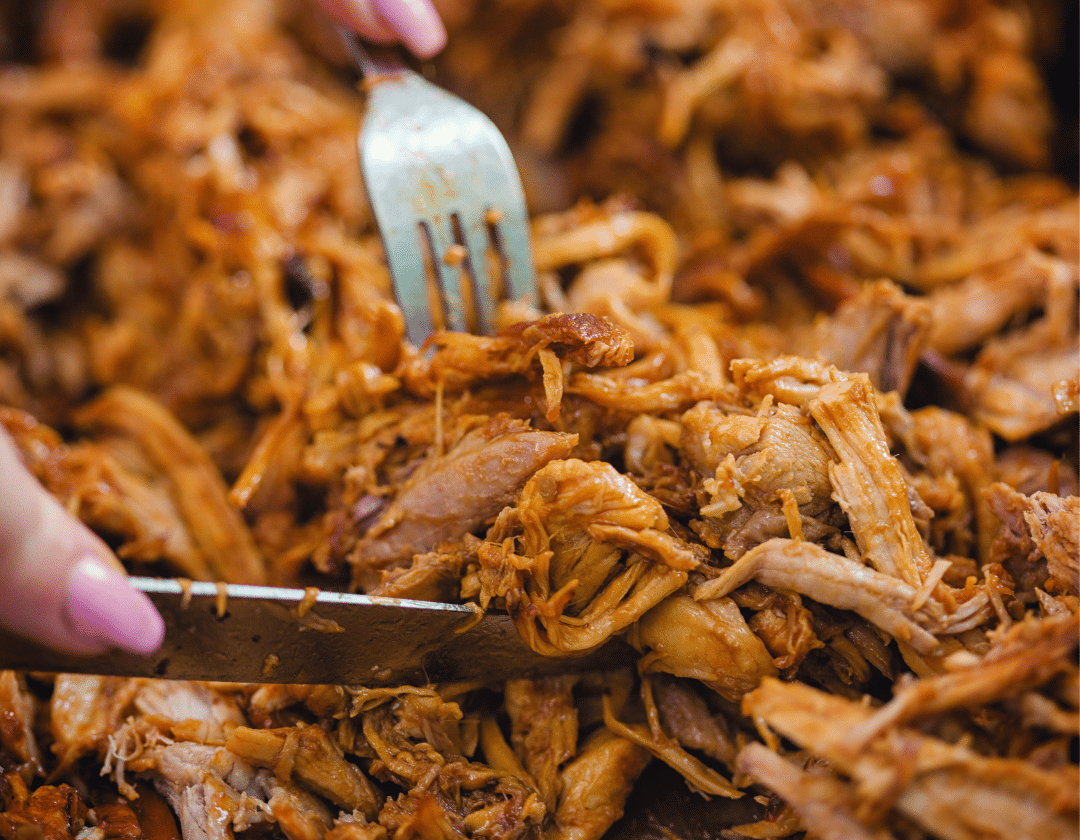
Pulled Pork
Share
Pulled Pork: A Timeless Culinary Delight
Pulled pork is a beloved dish that has stood the test of time, captivating taste buds with its tender texture and smoky, savory flavors. Let’s explore the history of this classic dish, various cooking methods, and the diverse sauces that bring it to life.
A Brief History of Pulled Pork
Pulled pork has deep roots in the culinary traditions of the Americas. Its origins can be traced back to indigenous peoples who slow-cooked meats over open flames or in earth ovens. With the arrival of Spanish explorers and African influences, the practice of barbecuing pork became widespread in the southeastern United States. By the 19th century, pulled pork was a staple at Southern gatherings.
The dish’s enduring popularity stems from its simplicity and adaptability. It takes a humble cut of inexpensive meat – typically pork shoulder or butt – and transforms it into a tender, flavorful masterpiece through slow cooking and seasoning.
Ways to Cook Pulled Pork
Pulled pork’s magic lies in the cooking process, which breaks down tough connective tissues into melt-in-your-mouth goodness. Here are some popular methods:
- Smoker: Traditionalists swear by the smoker. We do too. It takes more time, but the gnetle smoky flavor from real smoke from the wood chips renders a taste like no other. We like mild wood chips like apple, or cherry imparts a mild, smoky flavor. Maintain a low temperature (225-250°F) for several hours, and baste occasionally for extra moisture. We use our Sweet & Tangy Mop sauce for basting. The
- Oven-Roasting: If you lack a smoker, an oven can achieve similar results. Wrap the pork in foil, cook at 275°F for 5+ hours until the pork pulls apart, and finish uncovered for a crispy bark.
- Slow Cooker: This hands-off approach is perfect for busy cooks. Season the pork, add a bit of liquid (like broth or soda), and let it simmer on low for 8-10 hours. Then drain the fat and shred the meat. Add more sauce and heat back up to serve.
- Instant Pot: For those short on time (the opposite of the slow cooker), pressure cooking can produce tender pulled pork in under an hour. Use the sauté function to sear the meat before pressure cooking for added flavor. We don’t think it has the deep flavor or smoking or even oven roasting.
Sauces: A World of Flavor
Pulled pork is a blank canvas for a variety of sauces, each reflecting regional and cultural influences. All of them require some sort of seasoning prior to cooking. We love our Sweet Heat spice rub. We’ve actually won best BBQ run in Texas. It’s that good. Just rub about 3-5 Tbsp on your pork butt before using your preferred cooking method below.
- Carolina Gold Sauce: The Carolinas have several regional BBQ sauces. Our new Carolina Gold is this sauce. It’s got plenty of tangy yellow mustard flavor perfect for cutting through the rich flavor of pulled pork.
- Kansas City BBQ Sauce: Sweet and slightly spicy, this thick tomato-based sauce features molasses and spices. Sticky Sweet or Sweet & Spicy.
- Alabama White Sauce: A unique mayonnaise-based sauce with tangy vinegar and a hint of horseradish. We would use Sweet Heat seasoning, celery salt, mayo and apple cider vinegar to make one homemade.
- Texas Mop Sauce: A savory, spicy sauce often used during the cooking process to keep the pork moist. Sweet & Tangy Mop sauce with Sweet Heat seasoning.
- Asian-Inspired Sauce: Incorporating soy sauce, ginger, and sesame oil with any of our sauces for a fusion twist.
- Carolina Vinegar Sauce: This tangy, thin sauce is made with vinegar, black pepper, and red pepper flakes, cutting through the richness of the pork. It’s more liquid than any of the other sauces.
Serving Suggestions
Pulled pork shines in a variety of dishes. Serve it on a toasted bun with coleslaw for a classic sandwich, pile it onto nachos or tacos for a game-day treat, or use it as a topping for pizza or baked potatoes. For a healthier option, pair it with roasted vegetables or a crisp green salad.
Pulled pork is more than just a dish; it’s a testament to the joys of slow cooking and the rich tapestry of culinary traditions.

